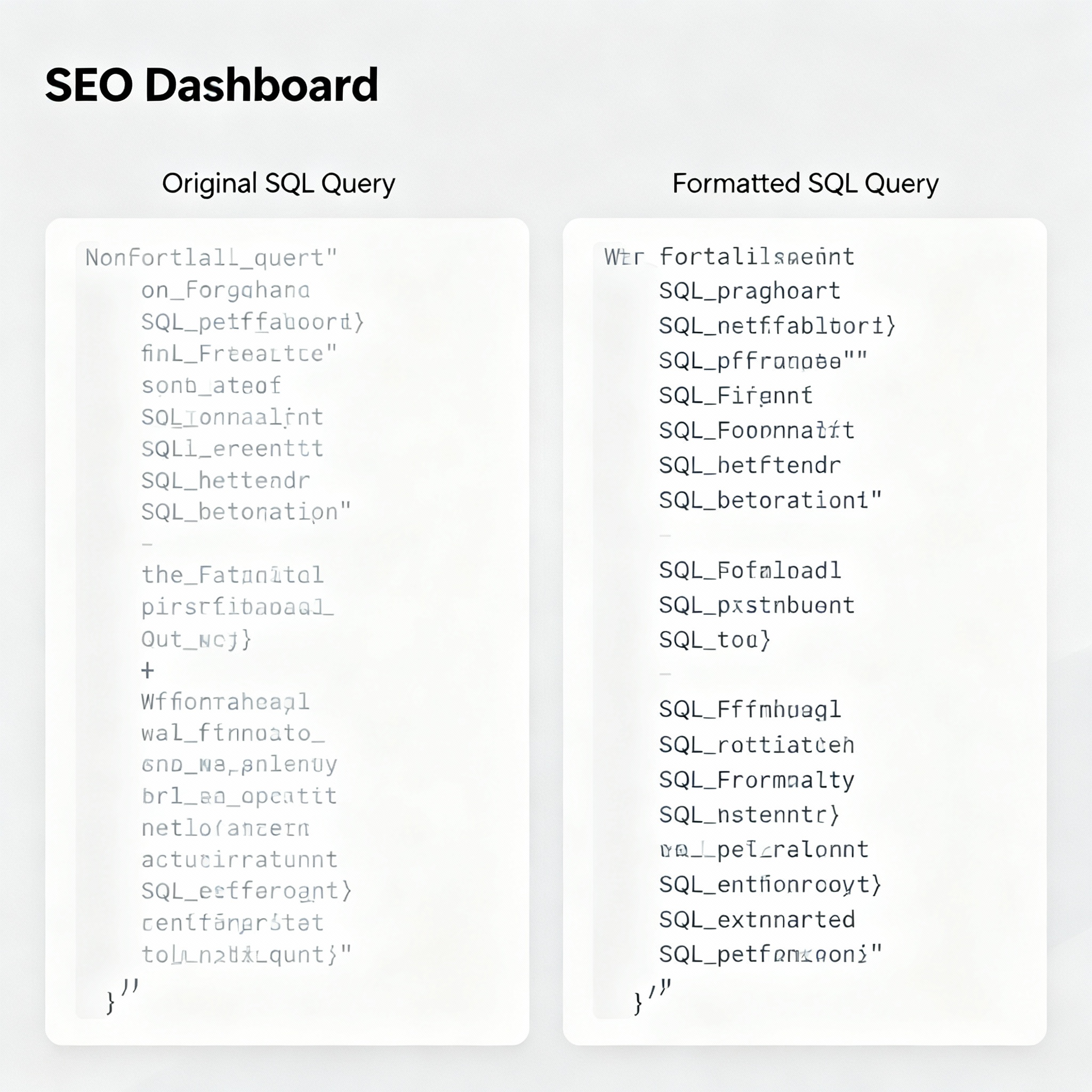
SQL formatter/beautifier
Created on 19 October, 2025 • Developer tools • 26 views • 2 minutes read
An SQL formatter or beautifier is a specialized tool designed to automatically organize, clean, and visually enhance SQL
An SQL formatter or beautifier is a specialized tool designed to automatically organize, clean, and visually enhance SQL (Structured Query Language) code. Whether you’re a database developer, data analyst, SEO specialist, or tech blogger, using an SQL formatter ensures your code is readable, maintainable, and error-free. For websites targeting tech audiences, sharing well-formatted SQL improves user experience, authority, and even helps with SEO by promoting clarity and engagement.
What Is an SQL Formatter/Beautifier?
Definition and Functionality
An SQL formatter or beautifier takes raw or unorganized SQL queries and transforms them into neatly indented, color-coded, and consistently styled statements. These tools handle capitalization of keywords, alignment of fields and clauses, and consistent spacing—making even complex queries easy to follow.
Core functions include:
- Automatic indentation
- Keyword capitalization (SELECT, WHERE, JOIN, etc.)
- Standardized line breaks, spacing, and alignment
- Removal of extra whitespace
- Consistent formatting style for multi-developer projects
Benefits for Developers, Teams, and Publishing
Increased Readability and Maintainability
- Well-formatted SQL is much easier to read, debug, and modify. Developers can review query logic at a glance, speeding up troubleshooting and code reviews.
- Clear code structure reduces the risk of overlooked errors and improves onboarding for new team members or collaborators.
Enhanced Collaboration
- Team projects benefit from uniform formatting, ensuring code consistency across databases and applications, regardless of who wrote the original queries.
- Eliminates confusion from mixed styles—especially in open-source or outsourced work.
Faster Debugging and Optimization
- Indentation and alignment reveal query structure and nested logic, making it simpler to spot inefficiencies, unclosed parentheses, or logic mistakes.
- Simplifies performance tuning, as developers can follow joins, subqueries, and CTEs more accurately.
SEO and Content Quality Advantages
- Improved Engagement: Blog posts, help articles, and documentation featuring clean SQL encourage readers to interact, share, and spend longer on the page—positive signals for search engines.
- Lower Bounce Rates: Readers are less likely to leave or get frustrated by messy code blocks, keeping your technical content trusted and reputable.
- Code Snippet Indexing: Search engines index well-formatted code in structured HTML more accurately, improving the content’s discoverability in search results, snippet features, and Q&A platforms.
- Authority and Trust: High-quality formatting signals expertise and professionalism—attracting links from developers, educators, and communities.
How to Use an SQL Formatter/Beautifier
- Copy and paste your raw SQL query into an online formatter or IDE tool.
- Choose formatting preferences (keyword case, indentation size, etc.).
- Generate the beautified output and use in code, documentation, or web content.
- Some tools offer live formatting in text editors and bulk processing for large repositories.
Best Practices
- Always format SQL before sharing, especially in team settings or public resources.
- Maintain consistency by setting team or project standards for SQL style.
- Use formatting as part of your code review and publishing workflows.
Conclusion
An SQL formatter/beautifier is vital for any project demanding clear, reliable, and accessible SQL. Clean code not only drives technical productivity, but also boosts SEO and content engagement—ensuring your site stands out as a resource for developers, analysts, and data-driven professionals. Routine formatting turns SQL from mere code into a communication asset, amplifying your digital presence and authority.
Popular posts
-
GIF to BMPImage Manipulation tools • 353 views
-
GIF to WEBPImage Manipulation tools • 256 views
-
GIF-to-PNGImage Manipulation tools • 190 views
-
SHA-3/512 generatorConverter tools • 152 views
-
GIF to JPGImage Manipulation tools • 122 views